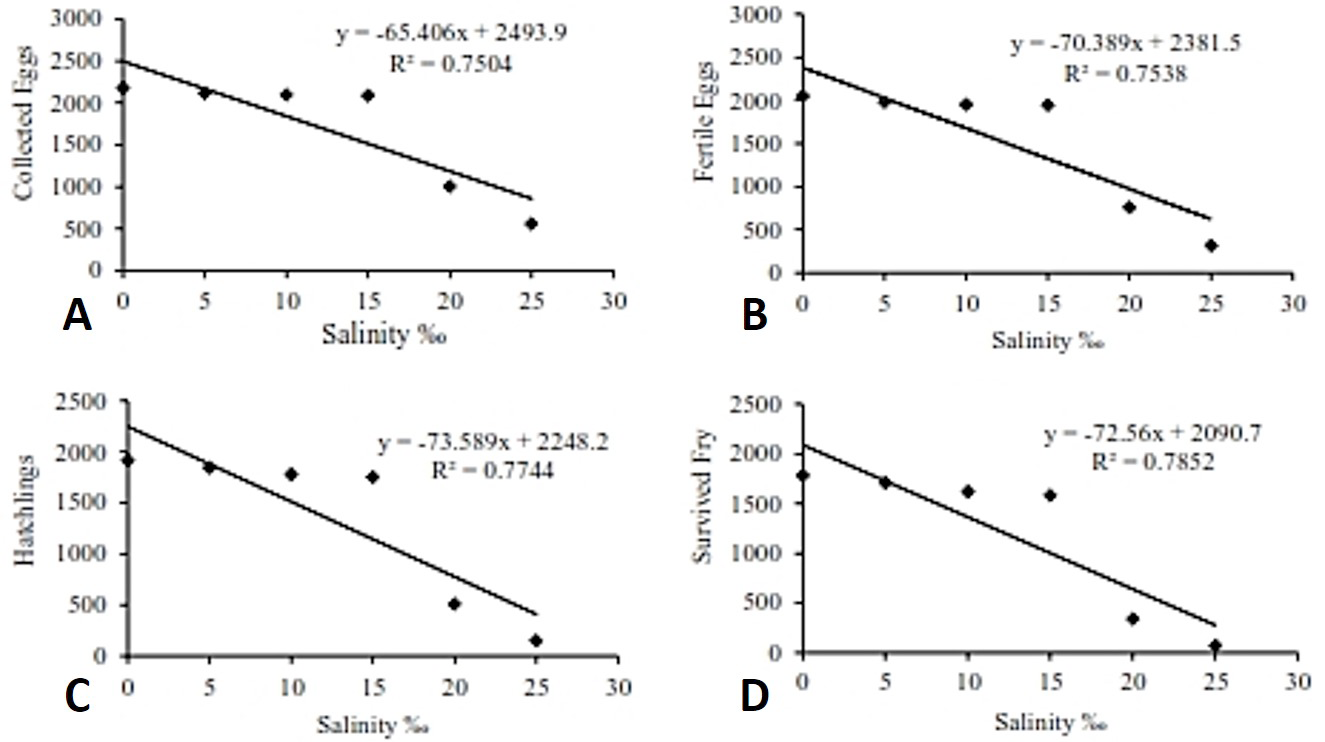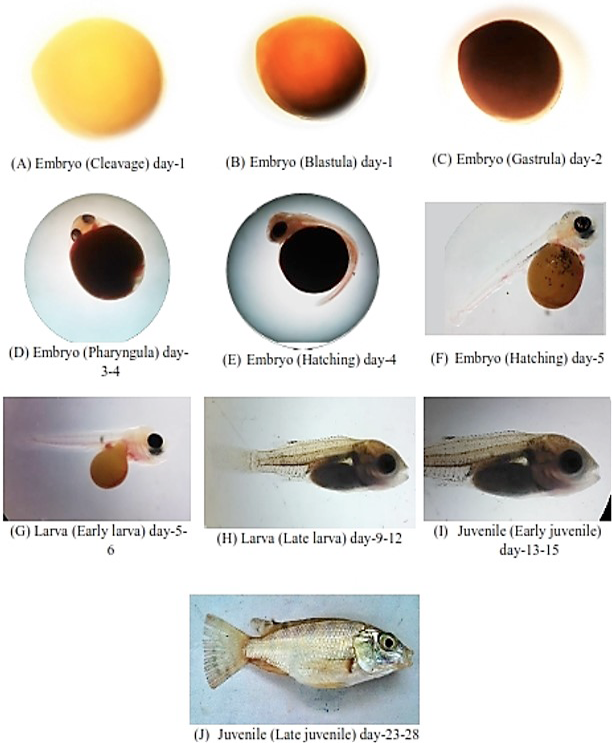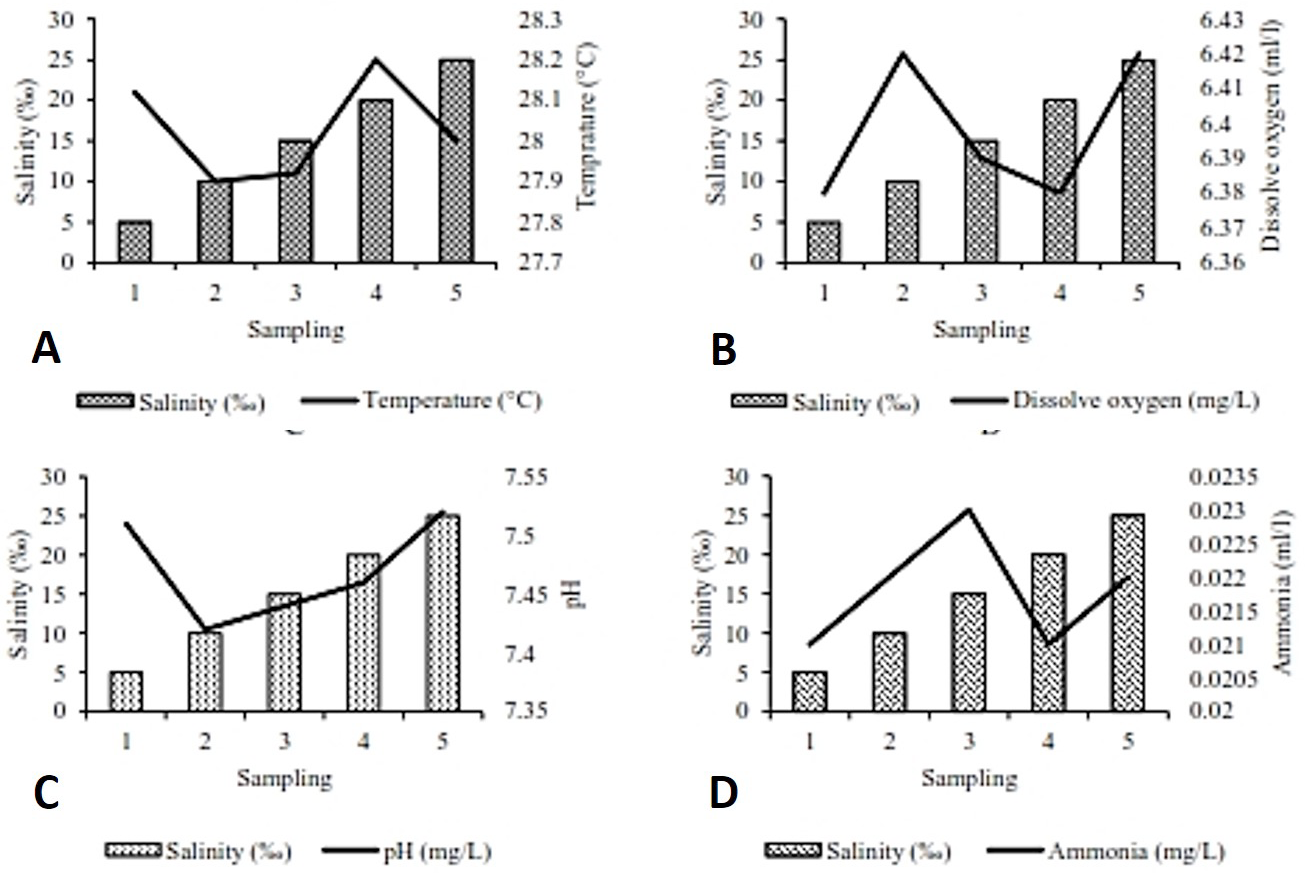Effect of Different Salinity Level on Breeding, Fertilization, Hatching and Survival of Nile Tilapia, Oreochromis niloticus (Linnaeus, 1758) in Captivity
Effect of Different Salinity Level on Breeding, Fertilization, Hatching and Survival of Nile Tilapia, Oreochromis niloticus (Linnaeus, 1758) in Captivity
Abdul Malik1,2, Ghulam Abbas1,*, Abdul Ghaffar3, Sara Ferrando4, Lorenzo Gallus4 and Syed Sajjad A. Shah2,3
Regression of salinity on fecundity (A), fertility (B), hatchability (C) and fry (D) of Nile tilapia (Oreochromis niloticus) among all treatments.
Egg to juvenile development stages of Nile tilapia: fertilized egg yellow in color at the first day (A, B) than yellow brown and yolky; at second day small dark spots are appeared on the egg surface (C); from third day and fourth day eyes and hair-like tail appeared (D & E); at the fifth day head appeared (F); from fifth day to sixth day head and tail further more developed, yolk sac decreased and the embryo started slight movement (G); on ninth day to twelfth day post-yolk sac appeared at this stage yolk sac was completely absorbed and fry started to feed on artificial diet (H). On thirteenth day to fifteenth day fins and other body parts are developed completely and reached about 0.5 g in weight (I). Finally reached 1-2 g in weight and look like parent after twenty third day to twenty-eighth day (J).
Water quality parameters recorded during the experimental period. A, temperature; B, dissolve oxygen; C, pH; D, ammonia on different salinity levels.

















